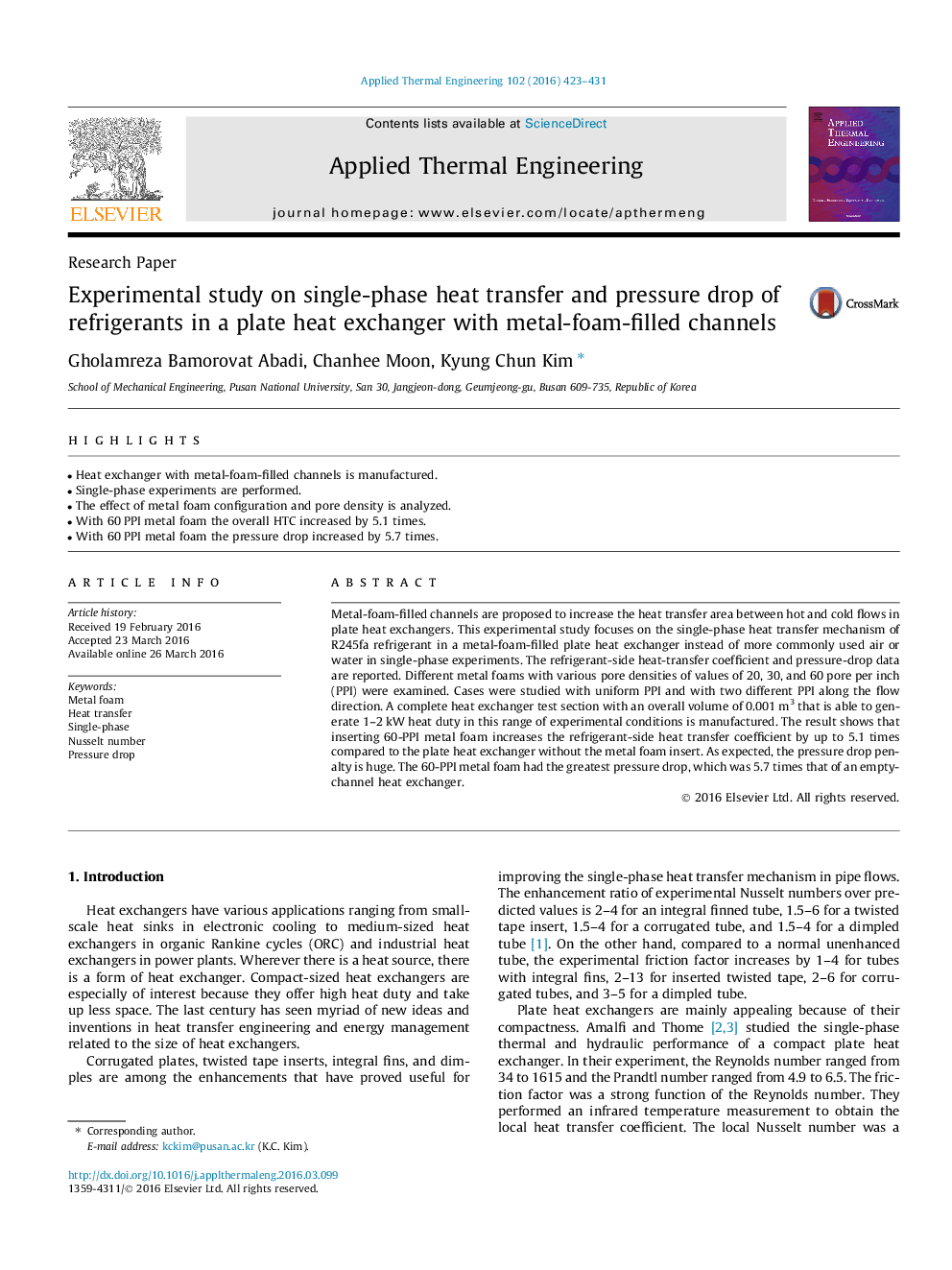| Article ID | Journal | Published Year | Pages | File Type |
|---|---|---|---|---|
| 7047993 | Applied Thermal Engineering | 2016 | 9 Pages |
Abstract
Metal-foam-filled channels are proposed to increase the heat transfer area between hot and cold flows in plate heat exchangers. This experimental study focuses on the single-phase heat transfer mechanism of R245fa refrigerant in a metal-foam-filled plate heat exchanger instead of more commonly used air or water in single-phase experiments. The refrigerant-side heat-transfer coefficient and pressure-drop data are reported. Different metal foams with various pore densities of values of 20, 30, and 60Â pore per inch (PPI) were examined. Cases were studied with uniform PPI and with two different PPI along the flow direction. A complete heat exchanger test section with an overall volume of 0.001Â m3 that is able to generate 1-2Â kW heat duty in this range of experimental conditions is manufactured. The result shows that inserting 60-PPI metal foam increases the refrigerant-side heat transfer coefficient by up to 5.1 times compared to the plate heat exchanger without the metal foam insert. As expected, the pressure drop penalty is huge. The 60-PPI metal foam had the greatest pressure drop, which was 5.7 times that of an empty-channel heat exchanger.
Related Topics
Physical Sciences and Engineering
Chemical Engineering
Fluid Flow and Transfer Processes
Authors
Gholamreza Bamorovat Abadi, Chanhee Moon, Kyung Chun Kim,
